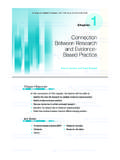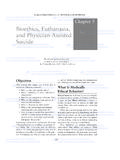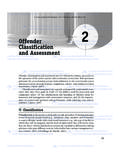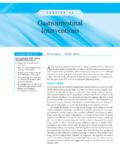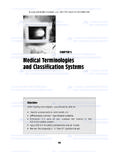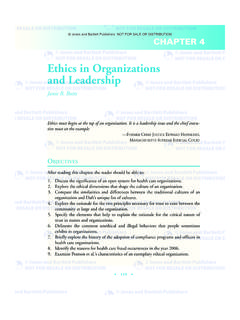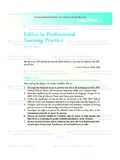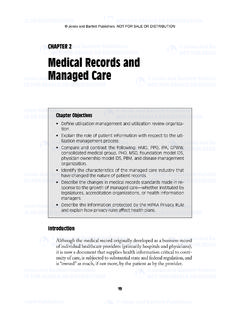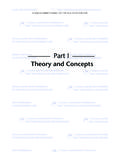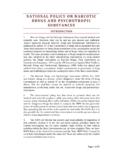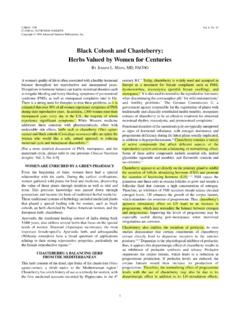Transcription of Culture, Behavior, and Health - Jones & Bartlett Learning
1 CHAPTER2 culture , behavior , and HealthADNAN ALI HYDER AND RICHARD H. MORROW If you wish to help a community improve its Health ,you must learn to think like the people of that com-munity. Before asking a group of people to assumenew Health habits, it is wise to ascertain the existinghabits, how these habits are linked to one another,what functions they perform, and what they meanto those who practice them (Paul, 1955).People around the world have beliefs and be-haviors related to Health and illness that stem fromcultural forces and individual experiences and per-ceptions. A 16-country study of community percep-tions of Health , illness, and primary Health care foundthat in all 42 communities studied, people used boththe Western biomedical system and indigenous prac-tices, including indigenous practitioners. Also, therewere discrepancies between services the governmen-tal agencies said existed in the community and whatwas really available.
2 Due to positive experiences withalternative healing systems, and shortcomings in theWestern biomedical system, people relied on both(Scrimshaw, 1992). Experience has shown that healthprograms that fail to recognize and work with in-digenous beliefs and practices also fail to reach theirgoals. Similarly, research to plan and evaluate healthprograms must take cultural beliefs and behaviorsinto account if researchers expect to understand whyprograms are not working, and what to do about chapter draws on the social sciences, par-ticularly anthropology, psychology, and sociology, toexamine the cultural and behavioral parameters thatare essential to understanding international healthefforts. It begins with some key concepts from thefield of anthropology and the subfield of medical an-thropology. It continues with lists and brief descrip-tions of types of Health belief systems and healersaround the world. Next, some key theories of healthbehavior and behavioral and cultural change are de-scribed and discussed.
3 Issues of Health literacy andhealth communication are then addressed, along withhealth promotion strategies. Methodological issuesare presented, followed by a case study of AIDS inAfrica. The chapter concludes with a summary ofhow all these areas need to be considered in interna-tional Health Concepts from MedicalAnthropologyHealth and illness are defined, labeled, evaluated,and acted upon in the context of culture . In the 18thcentury, anthropologist Edmund Tylor defined cultureas that complex whole which includes knowledge,belief, art, morals, law, custom, and any other capa-bilities acquired by man as a member of society (Tylor, 1871). Since those early days of anthropol-ogy, there have been literally hundreds of definitionsof culture , but most have the following concepts incommon (Institute of Medicine, 2002): Shared ideas, meanings, and values Socially learned, not genetically transmitted41 Acknowledgments:I would like to thank Carolyn Cline for assistance in editing and preparing the bibliography, Pamela Ippoliti for editorialassistance, Susan Levy for providing key examples from the intervention literature, and Isabel Martinez and Janel Heinrich for assistance withthe literature search, for helpful comments on the chapter, and, in particular, for preparing and revising the case study on AIDS.
4 I am also grate-ful to Carole Chrvala for sharing notes on the various intervention 6/27/05 8:02 AM Page 41 Patterns of behavior that are guided by theseshared ideas, meanings, and values Often exists at an unconscious level Constantly being modified through livedexperiences The last of these concepts is a relatively new intro-duction. Lived experiencesare defined as the experi-ences that people (and sometimes groups of people) gothrough as they live their lives. These experiences mod-ify their culturally influenced beliefs and behaviors(Garro, 2000, 2001). This means culture is not staticon either the group or individual level, because peopleare constantly changing. This concept helps allow forcultural change as people migrate to a new setting(community, region, or country), as people acquire ad-ditional education and experiences, and as conditionschange around them ( , armed conflicts, economicchanges in a country or region, political changes).
5 Thisis a helpful viewpoint when looking at cultural changeon both the individual and group anthropologists observe different cul-tures and their perspectives on disease and illness bylooking at the biological and the ecological aspects ofdisease, the cultural perspectives, and the ways inwhich cultures approach prevention and understand the cultural context of Health , it isessential to work with several key concepts. First, theconcepts of insider and outsider perspectives are use-ful for examining when we are seeing things fromour point of view and when we are trying to under-stand someone else s view of things. The insider per-spective (emicin anthropological terminology) showsthe culture as viewed from within. It refers to themeaning that people attach to things from their cul-tural perspective. For example, some cultures viewworms (Ascaris) in children as normal and believethey are caused by eating sweets.
6 The outsiderper-spective (eticin anthropology) refers to the same thingas seen from the outside. Rather than meaning, itconveys a structural approach, or something as seenwithout understanding its meaning for a culture . It canalso convey an outsider s meaning attached to thesame phenomenon for example, that ascariasis iscontracted through ingesting eggs found in contam-inated soil or in foods contaminated by contact withthat soil. The eggs get into the soil through fecalwastes from infected individuals. The concepts of in-sider and outsider perspectives allow us to look athealth, illness, and prevention and treatment systemsfrom several perspectives, to analyze the differencesbetween these perspectives, and to develop ap-proaches that will work within a cultural continue the example, in Guatemalan villageswhere these beliefs prevailed, researchers learned thatmothers believed that worms were normal and werenot a problem unless they became agitated.
7 In theirview, worms live in a bag or sac in the stomach and arefine while so confined. Agitated worms get out and ap-pear in the feces or may be coughed up. Mothers alsobelieved that worms are more likely to become agitatedduring the rainy season because the thunder and light-ning frightened them. From an outsider perspective,this makes sense: Sanitation is more likely to breakdown in the rainy season, so there is more chance ofinfection and more diarrheal disease, which will revealthe worms. The dilemma for the Health workers wasto get the mothers to accept deworming medication fortheir children, because most of the time worms wereperceived as normal. If the Health workers tried to tellthe mothers that their beliefs were wrong, the moth-ers would reason that the Health workers did not un-derstand illness in a Guatemalan village and wouldreject their proposal. The compromise was to suggestthat the children be dewormed just before the rainyseason, in order to avoid the problem of agitatedworms.
8 It insider/outsider approach leads to another setof concepts. Diseaseis the outsider view, usually theWestern biomedical definition. It refers to an unde-sirable deviation from a measurable norm. Deviationsin temperature, white cell count, red cell count, bonedensity, and many others are seen as indicators ofdisease. Illness,on the other hand, means not feel-ing well. Thus it is a subjective, insider view. This setsup some immediate dissonances between the twoviews. It is possible to have an undesirable deviationfrom a Western biomedical norm and to feel , early stages of cancer, HIV infection,and early stages of diabetes are all instances wherepeople may feel well but have a disease. This meansthat Health care providers must communicate the needfor behaviors to address something that people maynot realize is a is also possible for someone to feel ill and forthe Western biomedical system not to identify a dis-ease.
9 When this occurs, there is a tendency forWestern-trained Health care providers to say thatnothing is wrong or that it is a psychosomatic prob-lem. Although both of these can be the case, thereare several other explanations for this possibility is that Western biomedical sciencehas not yet figured out how to measure 2 culture , behavior , and Health1I am indebted to Elena Hurtado of Guatemala for this 6/27/05 8:02 AM Page 42 Several recent examples of this include AIDS, gener-alized anxiety attacks, and chronic fatigue of these were labeled psychosomatic at one timeand now have measurable deviations from a biolog-ical norm. Similarly, painful menstruation used to belabeled subconscious rejection of femininity, butit is now associated with elevated prostaglandin lev-els and can be helped by a prostaglandin possibility is something that anthropol-ogists have called culture bound syndromes (Hughes, 1990), but this might be better described as culturally defined syndromes.
10 Culturally definedsyndromes are an insider way of describing and at-tributing a set of symptoms. They often refer to symp-toms of a mental or psychological problem, but aphysiological disease may exist, posing a challengeto the Health practitioner. For example, Rubel andcolleagues (1984) found that an illness called susto,or fright, in Mexico corresponded with symptoms oftuberculosis in adults. If people were told there wasno such thing as sustoand that they, in fact, had tu-berculosis, they rejected the diagnosis and the treat-ment on the grounds that the doctors obviously knewnothing about was complicated by thefact that tuberculosis was viewed as serious and stig-matizing. The solution was to discuss the symptomswith people and mention that Western biomedicinehad a treatment for those symptoms (Rubel et al.,1984). Sustomay also be used to describe other setsof symptoms, for example, those of diarrheal diseasein children (Scrimshaw & Hurtado, 1988).
